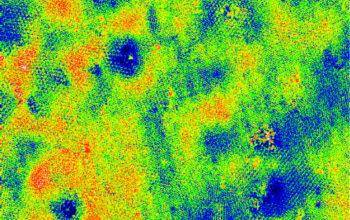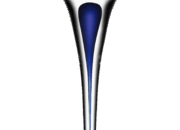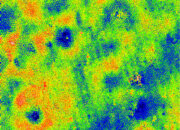Nanotechnology, a burgeoning interdisciplinary domain, has instigated profound transformations within the realm of medicine. By manipulating matter at the atomic or molecular scale, researchers have embarked on a quest to innovate methodologies for the diagnosis, treatment, and prevention of diseases, particularly cancer. The advent of computational frameworks, such as Geant4, has played an instrumental role in advancing our understanding of nanoparticle interactions with biological systems, paving the way for more effective therapeutic strategies targeting tumors.
As cancer remains one of the foremost health challenges globally, the intricate battle against this multifaceted disease has prompted a plethora of scientific inquiries. Among these, the utilization of nanoparticles has emerged as a promising frontier. These particles, typically ranging in size from 1 to 100 nanometers, can be engineered to enhance drug delivery mechanisms, facilitate imaging, and promote therapeutic efficacy. Their unique physicochemical properties, such as increased surface area-to-volume ratio and enhanced reactivity, render them particularly adept at traversing biological barriers—an essential feature in oncology.
Geant4, a comprehensive simulation toolkit for the study of the interaction of particles with matter, provides critical methodologies for researchers investigating the behavior of nanoparticles in medical applications. This software allows for the simulation of particle transport, which is central to understanding how nanoparticles behave in biological tissues. The spatial distribution, energy deposition, and potential biological effects of nanoparticles can be modeled accurately, giving insights into their efficacy in tumor targeting.
The primary motivation for employing Geant4 in nanomedicine is its ability to predict particle interactions with cellular components. By inputting specific parameters regarding the type of nanoparticles, their size, charge, and composition, researchers can simulate how these entities penetrate tumor microenvironments. Tumors often exhibit abnormal vasculature and a heterogeneous cellular arrangement, presenting unique challenges for drug delivery. Thus, simulating these interactions can yield invaluable data, allowing scientists to optimize nanoparticle characteristics for enhanced tumor selectivity.
Another pivotal consideration in the use of nanoparticles is their biocompatibility. The interaction of nanoparticles with biological systems is not merely a physical phenomenon but is governed by complex biochemical processes. Adsorption of serum proteins onto the nanoparticle surface, formation of a protein corona, and subsequent cellular uptake mechanisms are critical areas of investigation. Geant4 aids researchers in quantifying these interactions, providing insights into the potential immunogenic responses that may arise from nanoparticle administration. Such understanding is paramount, particularly when the goal is to minimize adverse effects while maximizing therapeutic efficacy.
Furthermore, the synergy of Geant4 with experimental methodologies enhances our understanding of dose distribution in tumor tissues. The precise conformity of drug delivery to tumor sites is essential in minimizing damage to surrounding healthy tissues. This is where Geant4 shines; by modeling the energy deposition profiles of therapeutic nanoparticles, it facilitates the planning of dosing regimens that can be tailored to individual patient needs. This level of personalization is crucial in modern medicine, particularly in oncology, where variations in tumor dynamics can significantly influence treatment outcomes.
In the context of radiotherapy, Geant4 also finds vital applications. The integration of nanoparticles into radiation therapy has shown promise in amplifying the therapeutic window through enhanced radiosensitization. Nanoparticles can be designed to absorb radiation more efficiently, thus augmenting the dose delivered to tumor cells while sparing normal tissues. By advancing theoretical models that incorporate the radiobiological effects of these nanoparticles, Geant4 contributes extensively to shaping more effective treatment paradigms.
Moreover, the implications of nanotechnology extend beyond mere drug delivery. The development of nanosized imaging agents promises to invigorate tumor diagnostics. Bioluminescent or fluorescent nanoparticles can achieve higher sensitivity and specificity in tumor identification than traditional imaging techniques. With Geant4, researchers can simulate their behavior in complex biological environments to ascertain the maximal signal-to-noise ratios achievable in imaging scenarios. This endeavor is vital for early detection, which is the cornerstone of successful cancer management.
The intersection of nanotechnology and medicine through platforms like Geant4 encapsulates a transformative narrative, one characterized by innovation and the relentless pursuit of knowledge. As researchers continue to unveil the intricate dance of nanoparticles within biological systems, the prospects for oncological applications burgeon. Each simulation empowers scientists to refine their strategies, paving the way for novel therapies that may one day revolutionize cancer treatment.
In conclusion, the multifaceted relationship between nanotechnology and medicine, exemplified by the role of Geant4, elucidates the intricate mechanisms at play in tumor targeting and treatment. As this synergy continues to flourish, it harbors the potential to not only enhance therapeutic efficacy but also to reshape the fundamental paradigms of cancer therapy. The journey of discovery in this arena underscores the remarkable promise of engineering solutions at the nanoscale, reaffirming a collective commitment to ameliorate human health through science.










